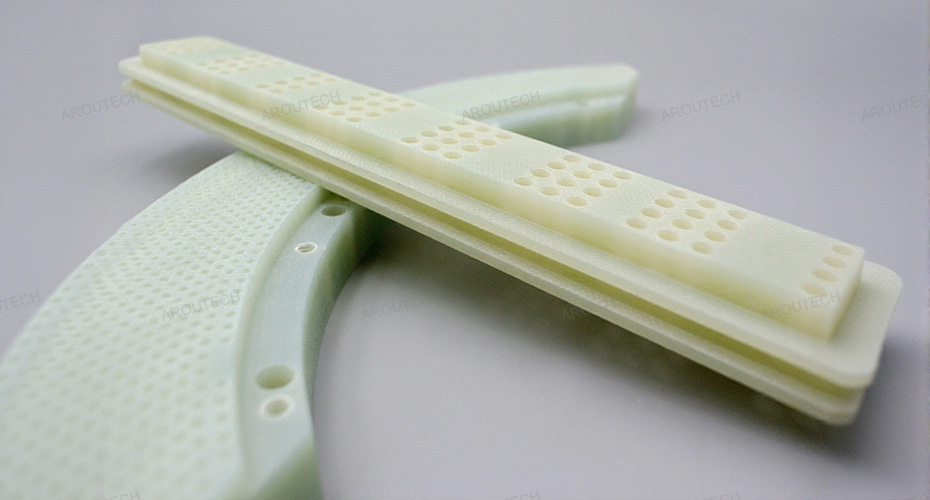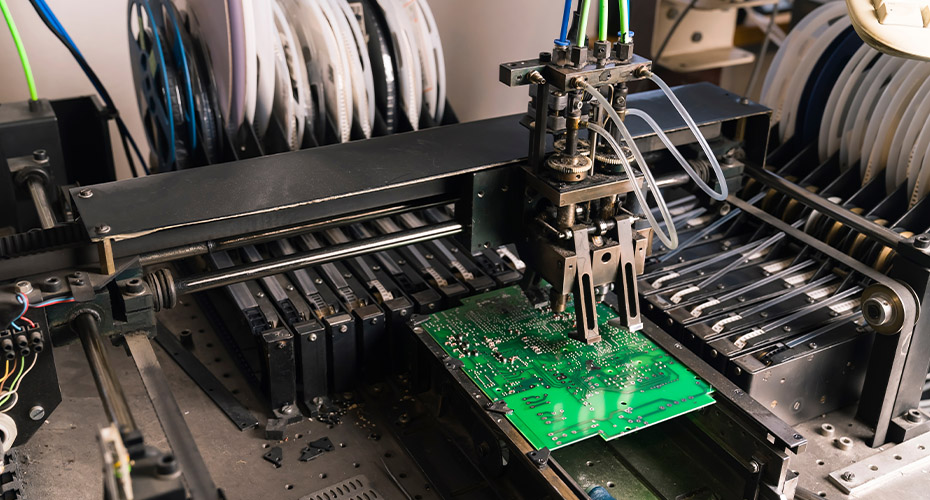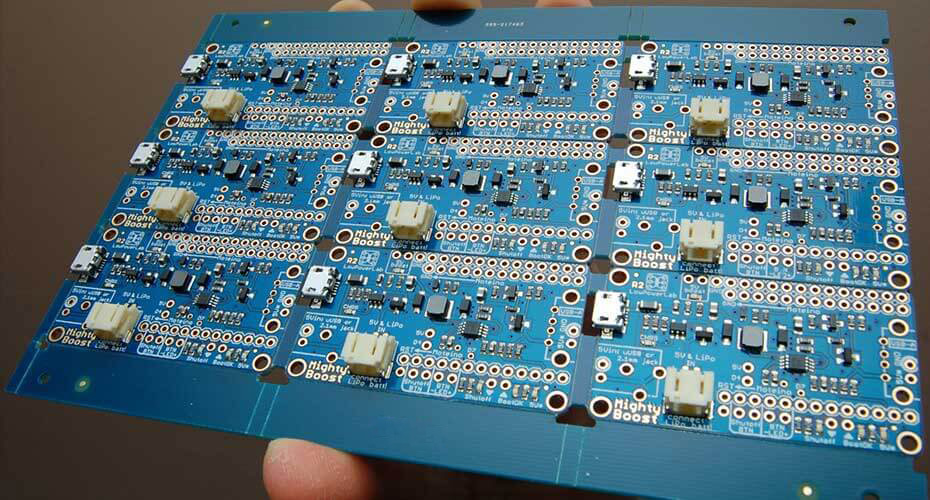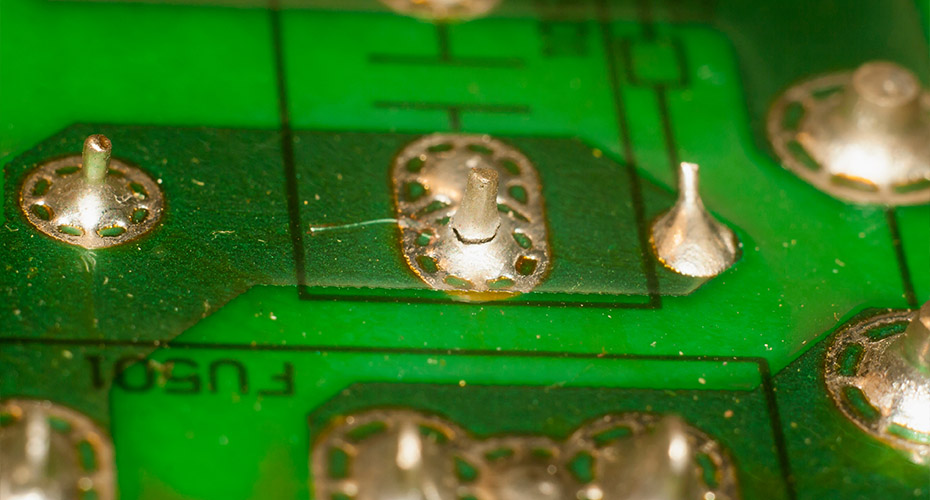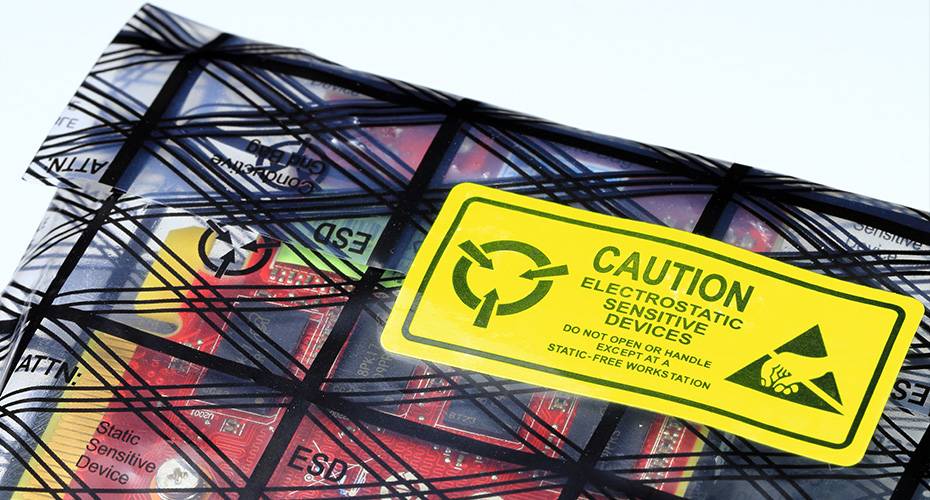Garolite G-10/FR-4 is widely recognized for its robust performance and versatility, making it a staple material across numerous industries. As a composite laminate, meaning it’s formed from layers of material bonded together under heat and pressure, it combines the inherent strength of woven glass fabric with the adhesive and protective qualities of an epoxy resin binder. This synergy results in a material that is not only mechanically strong but also exhibits superior dimensional stability and excellent electrical insulation properties.
This article explores the essential aspects of Garolite G-10/FR-4, including its composition, naming conventions, key properties, common applications, manufacturing process, limitations, and comparisons to other materials.
What Constitutes G-10/FR-4?
The core of Garolite G-10/FR-4 lies in its precise composition. It begins with a substrate of woven glass fabric, chosen for its structural integrity and inherent insulating characteristics. This fabric is meticulously impregnated with a thermosetting epoxy resin binder, a polymer that hardens permanently when cured, effectively encapsulating the glass fibers. This engineered process enhances mechanical strength, creating a material known for its ability to withstand significant physical stress while providing reliable thermal and electrical insulation.
Significance of the "G-10" and "FR-4" Designations
Understanding the nomenclature is key to appreciating the material’s capabilities.
- G-10: This term specifies a particular grade within the NEMA (National Electrical Manufacturers Association) classification system for glass-epoxy laminates (NEMA grades). G-10 is noted for its high mechanical strength, low moisture absorption, and excellent electrical insulating properties, often attributed to its specific glass cloth style and optimized resin formulation.
- FR-4: This designation signifies "Flame Retardant" and indicates that the material meets the stringent requirements of the UL94V-0 standard for flammability. This flame retardancy is typically achieved by incorporating bromine compounds or other flame-retardant additives into the epoxy resin formulation, which act to suppress combustion. This characteristic is crucial for applications requiring enhanced fire safety, making FR-4 (often combined with G-10 properties) a preferred choice in industries like electronics, aerospace, and transportation.
The dual designation "G-10/FR-4" commonly refers to material that meets both the G-10 standard for physical and electrical properties and the FR-4 standard for flame retardancy, underscoring its versatility for demanding and safety-critical environments.
The Composite Nature of G-10/FR-4
As a composite material, Garolite G-10/FR-4 synergistically blends the high tensile strength of fiberglass reinforcement with the adhesive properties, chemical resistance, and environmental stability of the epoxy matrix. The layered structure, typically built up sheet by sheet before the final curing process, ensures consistent and predictable properties throughout the material’s thickness. This meticulous engineering ensures that each constituent contributes effectively to the overall performance, making it an ideal choice for demanding applications where reliability is paramount.
Key Properties of Garolite G-10/FR-4
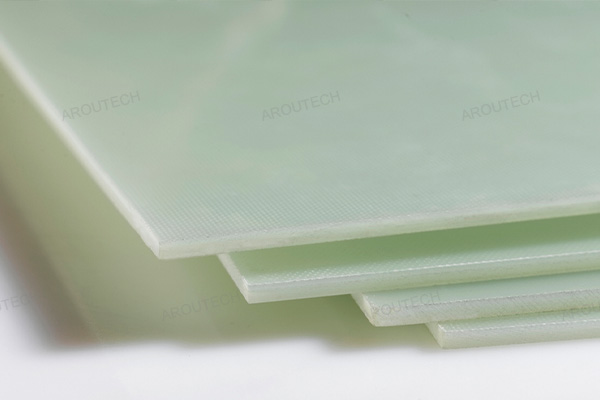
Garolite G-10/FR-4 boasts a suite of properties that make it indispensable in many fields. These attributes determine its suitability for specific applications and include:
Mechanical Strength and Its Industrial Relevance
The mechanical strength of G-10/FR-4 is one of its defining features. It exhibits high tensile, flexural, and compressive strength, allowing it to resist bending, stretching, and crushing forces effectively without permanent deformation or fracture under typical design loads. Industries such as aerospace, automotive, and heavy industrial equipment benefit significantly, using it for structural components, mounting plates, and insulators that must withstand significant loads and stresses. The reliability offered by G-10/FR-4 in maintaining structural integrity under pressure is a key reason for its adoption.
Electrical Insulation and Circuit Protection
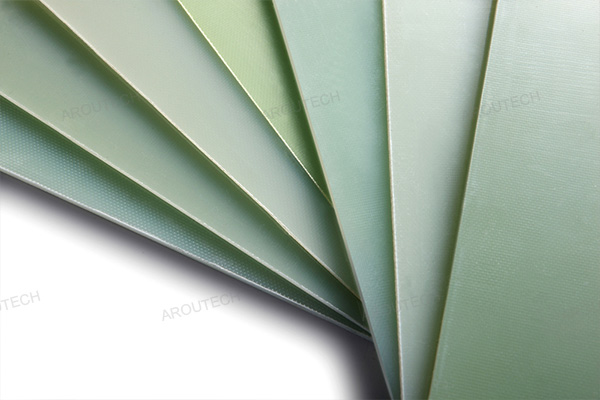
Exceptional electrical insulation is another standout property, making G-10/FR-4 indispensable in the electronics and electrical industries. It possesses high dielectric strength, meaning it can withstand high voltages across its thickness without electrical breakdown, along with low dissipation factor (loss tangent) and stable dielectric constant, ensuring minimal electrical signal loss, especially at higher frequencies. Printed circuit boards (PCBs) heavily rely on FR-4 as the primary insulating base material, protecting sensitive electronic components from short circuits and electrical interference, thereby safeguarding the longevity and reliability of electronic devices.
Thermal Stability in High-Temperature Environments
G-10/FR-4 Garolite demonstrates good thermal stability, allowing it to operate continuously at elevated temperatures without significant degradation. Its Glass Transition Temperature (Tg), the approximate temperature at which the epoxy matrix begins to transition from a rigid state to a more rubbery one, is typically around 130°C – 140°C for standard FR-4. Higher Tg variants (e.g., 170°C – 180°C) are available for applications demanding greater thermal endurance. This property is beneficial in environments like engine compartments, industrial machinery housings, and power electronics where heat resistance is crucial.
Chemical Resistance and Durability in Harsh Environments
The chemical resistance of G-10/FR-4 enhances its durability in harsh operating conditions. It withstands exposure to a wide range of chemicals, including many common solvents, acids, and alkaline solutions, without significant degradation. This makes it suitable for use in chemical processing equipment, marine applications, and laboratory apparatus where corrosive substances may be present, ensuring material integrity and functionality over time.
Dimensional Stability Across Various Conditions
Dimensional stability is another critical property, ensuring that G-10/FR-4 maintains its precise shape and size across varying temperatures and humidity levels. This stability stems from its low coefficient of thermal expansion (CTE) and minimal moisture absorption compared to many other plastics or laminates. This is essential in applications requiring tight tolerances and consistency, such as in precision test fixtures, alignment tools, and complex electronic assemblies, reducing the risk of component failure due to environmental fluctuations.
Lightweight Nature and Its Advantages
Despite its impressive strength and rigidity, G-10/FR-4 Garolite remains relatively lightweight, especially when compared density-wise to metals like steel or aluminum. This offers considerable weight savings in structural and semi-structural applications. In aerospace, automotive, and portable equipment industries, reducing mass without compromising strength is critical for fuel efficiency, performance, and handling. G-10/FR-4 provides a strong yet lightweight solution to meet these needs.
Common Applications of G-10/FR-4 Garolite
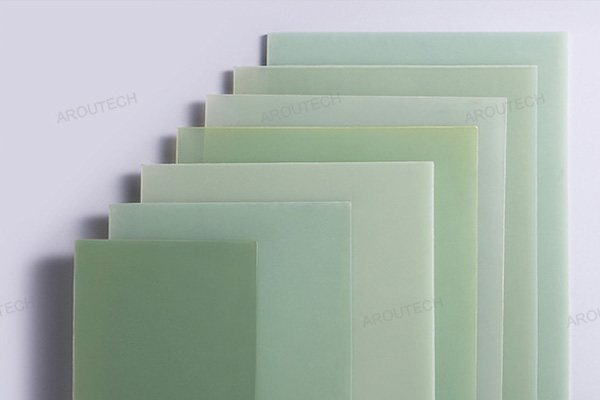
G-10/FR-4 Garolite’s unique property profile renders it ideal for a multitude of applications across diverse industries:
Role in Electronics and Circuitry
In the electronics industry, G-10/FR-4 is the benchmark insulating base material for printed circuit boards (PCBs), supporting and connecting electronic components in devices ranging from consumer gadgets to complex industrial control systems and telecommunication hardware. Its reliable electrical insulation and mechanical support are fundamental to modern electronics.
Contribution to Aerospace Engineering
Aerospace applications leverage the lightweight yet strong characteristics of G-10/FR-4. It is used in structural components, interior panels, insulating spacers, and mounting hardware, contributing to the overall safety, fuel efficiency, and performance of aircraft and spacecraft. Its ability to withstand vibration and operational stresses is key.
Marine Applications and Environmental Durability
In marine environments, G-10/FR-4’s excellent resistance to moisture absorption and chemical attack (especially saltwater) makes it ideal for components exposed to harsh conditions. Applications include electrical insulation, structural supports, and components in underwater equipment, where durability and reliability are essential.
Industrial Machinery and Mechanical Components
Within industrial settings, G-10/FR-4 is frequently used for high-strength mechanical components like gears, wear pads, jigs, fixtures, and insulating elements in heavy machinery. Its ability to withstand mechanical wear, impact, and operational stresses ensures smooth and efficient machine operation, reducing downtime and maintenance.
Medical Devices and Sterilization Requirements
G-10/FR-4’s combination of mechanical strength, chemical resistance, and ability to be machined to precise tolerances makes it suitable for certain medical device components and laboratory equipment. While its suitability depends on specific biocompatibility and sterilization requirements (it may not be suitable for all methods or implantable devices), its durability allows it to withstand repeated cleaning cycles in many applications.
Manufacturing Process of G-10/FR-4 Garolite
The manufacturing of G-10/FR-4 involves a precise, multi-step process:
- Weaving the Fiberglass Cloth: The process starts with high-quality fiberglass yarns woven into specific cloth styles (weaves) that influence the final material’s strength and dimensional stability.
- Impregnation with Epoxy Resin: The woven glass cloth is passed through a bath of catalyzed epoxy resin, ensuring thorough saturation (impregnation). The resin formulation includes the necessary flame retardants for FR-4 grades.
- Pre-Preg Formation (Optional Step): Often, the impregnated cloth is partially cured ("B-staged") into a tacky sheet called "pre-preg," which can be stored and handled before final lamination.
- Lay-up: Sheets of impregnated cloth or pre-preg are stacked layer by layer to achieve the desired thickness and orientation.
- Curing Under Heat and Pressure: The stack is placed in a hydraulic press where it undergoes a curing cycle under precisely controlled high heat and pressure. This combination fully polymerizes (cross-links) the epoxy resin, bonding the glass layers into a rigid, dense, and void-free thermoset laminate sheet.
- Cutting and Finishing: The cured laminate sheets are trimmed to standard sizes or cut according to customer specifications. Further finishing processes like sanding, milling, drilling, or routing may be applied to achieve specific dimensions, tolerances, or surface finishes.
Limitations and Considerations of G-10/FR-4 Garolite
Despite its advantages, G-10/FR-4 has limitations to consider:
- Cost: Compared to some commodity plastics or lower-grade laminates, G-10/FR-4 can have a higher initial material cost. However, its performance and longevity often provide better long-term value in demanding applications.
- Machining Challenges: The hardness and abrasive nature of the glass reinforcement can present challenges during machining. It requires specialized, wear-resistant tooling (like carbide or diamond-tipped bits) and specific techniques (e.g., appropriate feed rates, speeds, and robust dust extraction systems to manage the abrasive dust produced) to achieve clean cuts and tight tolerances without causing excessive tool wear, delamination, or edge chipping.
- Limited UV Resistance: Standard G-10/FR-4 has limited resistance to prolonged exposure to ultraviolet (UV) light. This can lead to surface discoloration (yellowing) and a gradual degradation of mechanical properties over time in outdoor applications. Protective coatings or UV-stabilized grades should be considered for such uses.
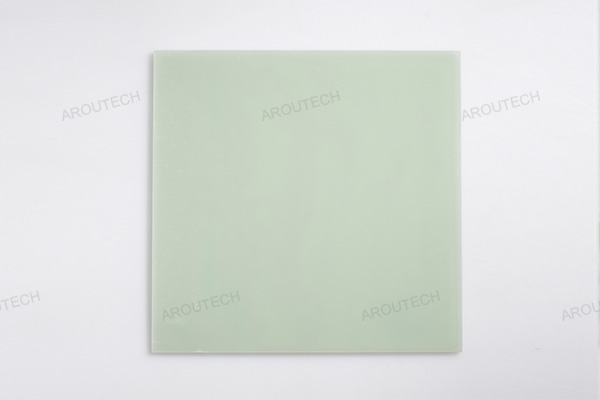
Comparing G-10/FR-4 Garolite to Other Composite Materials
Understanding how G-10/FR-4 compares to alternatives helps in material selection:
- Versus Carbon Fiber Composites: G-10/FR-4 offers superior electrical insulation and is generally more cost-effective. While carbon fiber composites provide significantly higher stiffness-to-weight and strength-to-weight ratios, G-10/FR-4 is preferred when electrical isolation is paramount, impact resistance is needed, or budget is a primary constraint.
- Versus Aluminum: G-10/FR-4 excels in electrical insulation (aluminum is conductive) and offers superior resistance to corrosion and many chemicals. While aluminum is easily formed and machined, G-10/FR-4 provides a robust, non-conductive alternative in harsh chemical environments or where electrical isolation and lighter weight (than steel) are needed.
- Versus Other Fiberglass Laminates: G-10/FR-4 stands out due to its specific combination of NEMA G-10 grade properties (high mechanical/electrical performance, low moisture absorption) and the FR-4 flame retardancy rating (UL94V-0). Other NEMA grades like G-7 (silicone resin, higher temp), G-9 (melamine resin, arc resistance), or G-11 (higher temp epoxy) offer advantages in specific niche areas, but G-10/FR-4 provides a well-balanced, widely available, and cost-effective profile suitable for a vast range of applications.
Conclusion
G-10/FR-4 Garolite is a remarkably versatile and reliable engineering material, offering a unique combination of mechanical strength, excellent electrical insulation, thermal stability, chemical resistance, and dimensional stability. Its widespread use across demanding industries like electronics, aerospace, marine, and industrial manufacturing attests to its performance capabilities. By understanding its properties, manufacturing process, applications, and limitations—as well as how it compares to alternatives—engineers and designers can make informed decisions to leverage G-10/FR-4 effectively in their projects, ensuring optimal performance and reliability.
References
- Composite Laminate: Wikipedia contributors. "Composite laminate." Wikipedia, The Free Encyclopedia.
- Thermosetting Polymer: Wikipedia contributors. "Thermosetting polymer." Wikipedia, The Free Encyclopedia.
- NEMA (National Electrical Manufacturers Association): Official Website.
- NEMA Grades: Wikipedia contributors. "NEMA grades." Wikipedia, The Free Encyclopedia.
- UL94 Standard (Flammability): Wikipedia contributors. "UL94." Wikipedia, The Free Encyclopedia.
- Dielectric Strength: Wikipedia contributors. "Dielectric strength." Wikipedia, The Free Encyclopedia.
- Printed Circuit Board (PCB): Wikipedia contributors. "Printed circuit board." Wikipedia, The Free Encyclopedia.
- Glass Transition (Tg): Wikipedia contributors. "Glass transition." Wikipedia, The Free Encyclopedia.
- Coefficient of Thermal Expansion (CTE): Wikipedia contributors. "Coefficient of thermal expansion." Wikipedia, The Free Encyclopedia.

